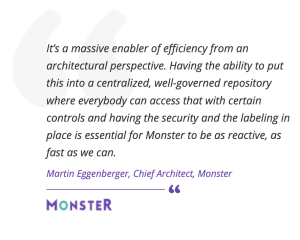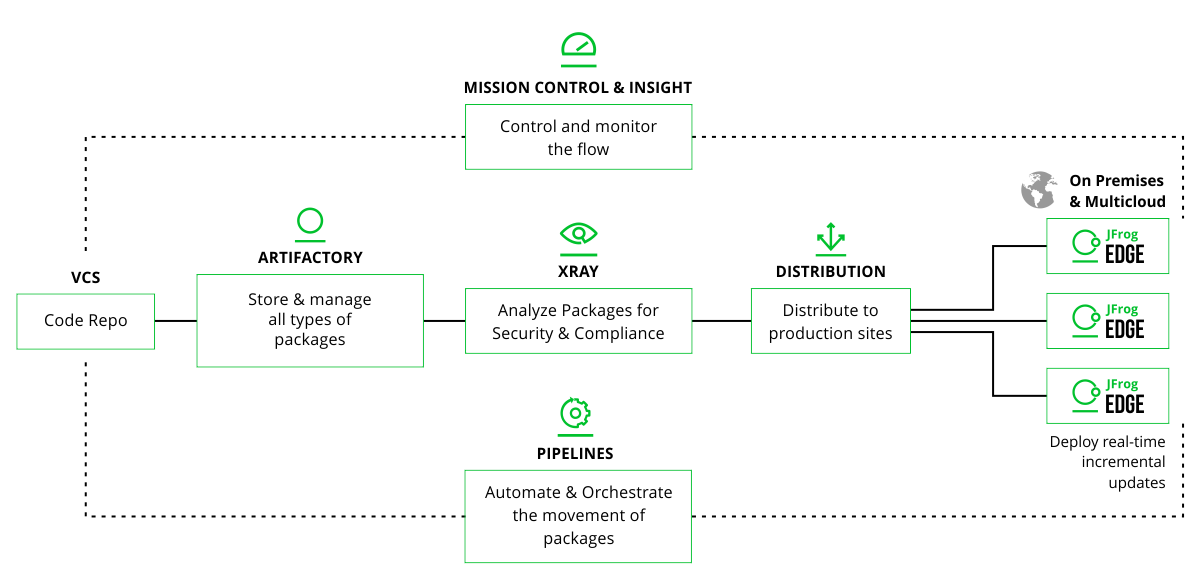Home » Latest Articles » JFrog Artifactory for Cloud Security and DevOps

Imagine you’re a modern-day developer, coding away and spinning up containers like a software cowboy on the digital frontier.
But just as real-life cowboys need a trustworthy arsenal to tackle the challenges of the Wild West, developers require a reliable repository to keep their code safe, secure, and readily available.
Enter JFrog Artifactory, a battle-tested solution that promises to be your trusty ammunition locker for all your DevOpsDevOps is a partnership between software development and IT… More needs.
But what exactly is this “universal repository manager,” and how can it help tame the chaos of managing dependencies, artifacts, and packages across your entire software supply chain?
Let’s saddle up and explore the features, benefits, and real-world applications of JFrog Artifactory that have made it a go-to choice for thousands of companies worldwide.
JFrog Artifactory is a universal DevOpsDevOps is a partnership between software development and IT… More artifact repository and package management solution that provides end-to-end automation and management of binary artifacts throughout the application delivery process.
Eh? In plain language, please! Ok, think of it like a cross between a bank and an ATM: it keeps all your stuff safe in a central place, and it makes your stuff available safely into remote locations.
When it comes to “what stuff does it keep safe?”, Artifactory supports a wide range of package formats and integrates seamlessly with popular CI/CDContinuous integration and continuous delivery/deployment, a… More tools, enabling developers and DevOpsDevOps is a partnership between software development and IT… More teams to streamline the process of managing and distributing binary artifacts across the software development lifecycle.
We can help you to:
The most important features of Artifactory as valued by Cloud Security and DevOpsDevOps is a partnership between software development and IT… More pros, are the ones that help them get Jobs To Be Done:
“Can it manage all of my stuff?”
Artifactory supports a wide range of package formats, including Maven, Docker, NPM, Helm, NuGet, and more.
“Software is messy! Can it tell me about vulnerabilitys in upstream packages?”
Artifactory allows developers to manage dependencies efficiently, resolve them quickly, and cache remote artifacts locally.
“Is it easy to manage? I want an easier life, not more headaches.”
Artifactory provides a highly available, scalable, and secure architecture with multi-site replication, ensuring uninterrupted service and data integrity.
“Can I plug it into our current process — or, even better, improve our process?”
Artifactory integrates with popular CI/CDContinuous integration and continuous delivery/deployment, a… More tools like Jenkins, Bamboo, TeamCity, and others, automating the release process.
“Please tell me it uses all the standard enterprise security functions?”
Artifactory offers role-based access control, LDAP/AD integration, and SAML SSO support, ensuring secure access to artifacts.
“I get it can see inside packages, but what insights can it give about all of my packages?”
Artifactory allows the management of metadata associated with artifacts, providing valuable information for release management.
“It’s not going to force me to use Yet Another Storage Backend, is it?”
It supports various storage backends, including local file systems, cloud storage providers, and hybrid solutions.
What do Cloud Security and DevOpsDevOps is a partnership between software development and IT… More pros report as the the good and the not so good with Artifactory?
Find out more comparisons and peer reviews on G2.
Enough about the vendor and product, already! What about the real world where Artifactory is used?
Over 12,000 companies are currently using JFrog Artifactory. JFrog Artifactory serves as a central hub for DevOpsDevOps is a partnership between software development and IT… More, offering a single solution for housing and managing all artifacts, binaries, packages, files, containers, and components for use throughout a company’s software supply chain
You can find various case studies on the JFrog website showcasing how different companies have successfully implemented Artifactory in their DevOpsDevOps is a partnership between software development and IT… More workflows.
Some examples include:

Netflix case study for Artifactory: “Astrid: Artifactory-Sourced Dependency Insight at Netflix”
![]()
Splunk case study for Artifactory: “Data to everything: delivered via DevOps”

![]()
Monster case study for Artifactory: “How JFrog Helped Speed Monster to Cloud Native Transformation”

The primary users of JFrog Artifactory are:

People use Artifactory for:
Artifactory helps with securing the software supply chain, so it is relevant — even if it doesn’t map directly to specific controls, which are often abstract and high-level — and can be a way to implement and enforce a security policy and standards.
For example, Artifactory can help with OWASP SAMM — read our introduction to OWASP SAMM.
Artifactory also helps achieve compliance with standards such as the Cloud Security Alliance and their Cloud Control Matrix.
The Cloud Controls Matrix (CCM) is a security framework developed by the Cloud Security Alliance (CSA). It provides a standardized set of security controls to help organizations assess the overall security risk when adopting cloud computing services. The CCM covers various domains, including data security, infrastructure, identity and access management, and many more.
When deploying JFrog Artifactory in a cloud environment, you can implement the required security controls and configurations to adhere to CCM guidelines. For example, you can use encryption for data storage and transmission, implement access controls and authentication mechanisms, and monitor logs for security events. By integrating these controls into your Artifactory deployment, you can align your usage of the solution with the CCM’s best practices and recommendations.
JFrog Artifactory, as a binary repository manager, and like many other tools, does not have a 1:1 map to any Cloud Controls Matrix (CCM) control. But when JFrog Artifactory is deployed on cloud infrastructure or as a SaaS solution, it can be integrated with the respective cloud provider’s security and compliance offerings to align with the CCM.
You can find practitioner reviews on G2, Reddit and customer testimonials on JFrog’s own website.
On G2, JFrog Artifactory has been subsumed into the new, holistic Software Supply Chain Platform that also includes XRay and other components. But some of the reviews call out Artifactory:
The Artifactory posts are mostly under /r/devops. You can find the Artifactory posts here.